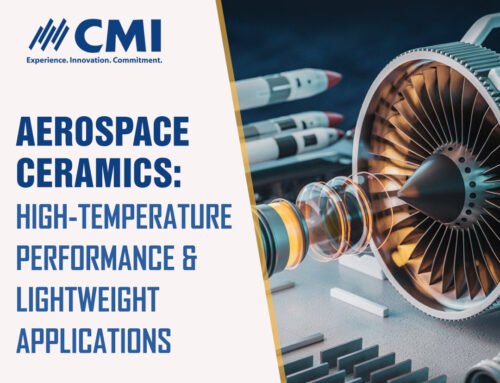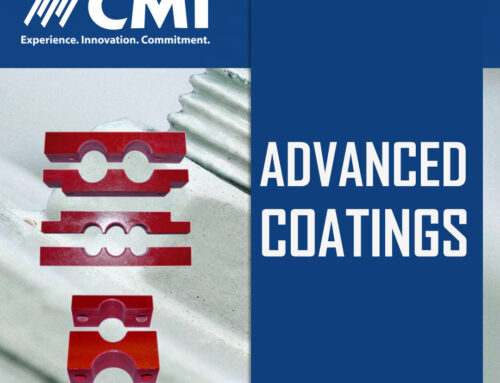Advanced ceramics play a key role in today’s military technology by offering strong, lightweight protection and high performance in extreme environments. These special materials are used in armor for vehicles, aircraft, and personnel, and can handle high temperatures and intense impacts far better than traditional metals.

Ceramics such as silicon carbide and alumina have changed how military vehicles and gear are built, making them safer and lighter for soldiers and equipment. These materials are found in body armor, armored vehicles, and aircraft to protect against bullets and blasts, while also improving speed and fuel efficiency due to their lightweight.
Key Takeaways
- Advanced ceramics offer strong, lightweight protection and are used in many military technologies.
- These materials are key in armor, weapons systems, and military electronics.
- New trends are pushing even more uses for ceramics in future military applications.
Fundamental Properties of Advanced Ceramics

Advanced ceramics are valued for their rigid mechanical structure, reduced weight, and ability to withstand heat, wear, and chemicals. These features make them key materials for protective uses and military engineering.
Thermal and Mechanical Strength
Ceramics such as silicon carbide and alumina withstand very high temperatures. They keep their shape and strength even during rapid temperature changes or direct flame. The materials do not melt or deform easily, making them suitable for armor and engine parts.
Ceramic plates prevent cracking and absorb energy in high-stress situations like ballistic impacts. Their structure keeps them from shattering or breaking apart. Military vehicles and body armor use ceramics to protect against bullets and blasts.
Ceramics remain steady across harsh thermal environments, keeping military tools and systems safe in places with extreme heat or cold. Because of these tough properties, many innovations in modern engineering involve ceramics.
Lightweight Characteristics
One of the main reasons advanced ceramics are used in military applications is their low weight. Ceramics are lighter than metals like steel and titanium, allowing engineers to build strong armor and equipment without adding heavy loads.
The lightweight feature helps improve soldier movement and vehicle speed. Lighter gear means less strain and enhanced endurance. Ceramic parts also benefit aircraft and drones, as the reduced weight lets them carry more equipment or travel longer distances.
Despite being light, ceramics offer high strength. This strength-to-weight advantage means they protect well while staying easy to transport. Designers often use ceramics when low mass is a priority without sacrificing safety.
Corrosion and Wear Resistance
Ceramics resist damage from chemicals and do not rust. In wet, salty, or acidic places, ceramics last longer than many metals. Parts stay reliable and work well even after prolonged use under harsh conditions.
Their surfaces are harsh. Advanced ceramics stay smooth and do not scratch or wear down quickly. For this reason, ceramics are used in weapons, engines, and electronic parts in military technology.
The combination of not corroding and high hardness lowers the need for repairs and replacements. This saves time and cost while ensuring that mission-critical systems continue to function.
Ballistic Protection Solutions

Advanced ceramics improve safety for both troops and vehicles. These materials combine lightweight with high resistance, making them valuable in defense.
Personal Body Armor
Ceramic plates are essential to modern body armor, protecting soldiers from bullets and shrapnel. These advanced ceramics break up incoming projectiles, dissipating their kinetic energy before softer materials in the armor absorb the remaining impact. This layered design results in body armor that is both highly protective and lightweight, allowing for greater mobility and comfort during extended wear.
Popular ceramic materials used in armor include alumina (Al₂O₃), silicon carbide (SiC), and boron carbide (B₄C). According to recent research, these ceramics are favored because of their exceptional hardness and ability to shatter high-velocity projectiles, especially those fired from high-powered rifles. For example, 99.7% pure alumina ceramics, hot-pressed boron carbide, and silicon carbide ceramic matrix composites are widely used to fabricate bulletproof plates that combine strength with durability.
Typically, ceramic plates are inserted into soft ballistic vests, providing a protective layer that is significantly lighter than traditional metal armor. This weight advantage reduces fatigue and enhances soldiers’ endurance in the field. Beyond stopping bullets, advanced ceramics also offer protection against sharp objects like knives and shrapnel. Moreover, some ceramic armors are engineered to withstand multiple impacts before failure, increasing survivability in combat scenarios.
The military application of advanced ceramics extends beyond personal armor. Ceramic armor systems, including ceramic armor seats and panel systems, are integrated into helicopters and armored vehicles to enhance protection without compromising performance. Additionally, ceramic matrix composites are employed in armored fighting vehicles, demonstrating the versatility and importance of ceramics in modern defense technologies.
Vehicle and Aircraft Armor
Military vehicles and helicopters use ceramic panels to guard against ballistic threats. These ceramic layers are combined with other materials to add strength and toughness. Compared to steel, ceramics reduce weight, allowing vehicles to move faster and use less fuel.
These panels protect vehicles from bullets, explosives, and even armor-piercing shells. They are often fitted to the outside of tanks, trucks, and aircraft to shield vital parts. When hit, the ceramic cracks and spreads the force over a wider area, stopping the object from penetrating.
Aircraft sometimes use ceramic parts in engines or brake discs. This increases lifespan and keeps weight low, which is essential for performance.
Transparent Ceramic Applications
Transparent ceramics offer a balance of protection and clear vision. They are used in vehicle windows and personal visors. Compared to glass, these ceramics stop bullets better and are more scratch-resistant.
Sapphire and aluminum oxynitride are standard materials. They can be made into thin but strong panels. This means that windshields and sight glasses stay clear even after impacts.
Military vehicles, helicopters, and riot gear use transparent ceramics for safety and visibility. Their lightweight is another benefit, helping vehicles and gear stay mobile. This approach protects troops while giving them a clear view of their surroundings.
Advanced Ceramics in Weapons Systems

Advanced ceramics make weapon systems lighter, stronger, and more effective. Ceramics offer unique benefits, including resistance to heat, wear, and high-impact forces.
Missile and Projectile Components
Ceramic materials are often used in missiles and other projectiles. Silicon carbide and alumina are popular choices because they can withstand high pressures and temperatures without breaking.
These ceramics make missile nose cones, control surfaces, and tip inserts more durable. Ceramics improve the accuracy and longevity of the weapon. Ceramic tips also help missiles and shells keep their shape and heat resistance during flight or impact.
Key roles of ceramics in missiles and projectiles:
- High hardness to penetrate tough armor
- Lightweight to increase speed and range
- Resistance to erosion from fast flight through the air
Military engineers keep using advanced ceramics in armor and projectiles because they help modernize and upgrade weapon systems.
Electromagnetic and Thermal Barriers
Many weapon systems generate extreme heat and strong electromagnetic fields. Ceramics can withstand these stresses where metals and plastics would fail.
Ceramic coatings work as barriers inside gun barrels and missile chambers. They protect parts from intense heat and rapid firing, which can damage equipment. These coatings also reduce friction and wear, keeping weapons reliable.
Some advanced ceramics block electromagnetic interference, which is essential for missile guidance and control electronics, keeping signals clear. Ceramic materials also act as insulators, protecting sensitive parts from heat and electrical damage.
Ceramics combine strength, heat resistance, and electrical insulation to make today’s weapons more effective and durable.
Electronic and Sensor Applications
Advanced ceramics are essential in military electronics because of their resistance to high temperatures, electrical insulation, and durability. These materials support better performance in devices that operate in extreme conditions and help make military technology more reliable.
Radar and Communication Systems
Radars and military communication systems depend on sensors and components that need to survive high heat and strong signals. Ceramics are used in antennas and radar housings because they do not corrode and can block electromagnetic interference.
These lightweight materials, common in planes and armored vehicles, can handle strong vibrations. Ceramics help stabilize radar and communication signals, even during rapid temperature changes or exposure to moisture.
Military aircraft and vehicles use ceramics to insulate and shield sensitive electronics. Ceramics are found in radar modules, electronic filters, and sensor covers. This use of ceramics improves the accuracy and safety of radar and communication systems in the field.
Emerging Trends and Future Military Use
Military use of advanced ceramics is shifting as new technology changes how materials are made and used. Innovations offer lighter, stronger, and more efficient solutions for defense systems.
Nanostructured Ceramics
Nanostructured ceramics have much smaller grains than ordinary ceramics, often on the nanometer scale. This improves mechanical strength, hardness, and toughness. Military engineers use these materials to create thinner yet stronger armor for vehicles and personal protection.
Small grains help absorb energy and prevent cracks from spreading, vital for ballistic protection. Nanostructured ceramics can also resist wear and heat better than traditional formats. They remain stable and reliable in high-temperature settings like gas turbines or missile systems. Better grain control has become possible through modern processing, making nanostructured ceramics more available for military armor systems.
Key benefits:
- Higher impact resistance
- Improved durability
- Weight reduction for faster vehicles
Additive Manufacturing Integration
Additive manufacturing, also called 3D printing, is changing how advanced ceramics are produced. This method allows for exact designs and custom shapes that are difficult to achieve with traditional methods. Military parts such as radomes, armor components, and complex sensor housings can now be made quickly and on demand.
3D printing reduces material waste and costs by using only what is needed. The military can create parts with unique internal structures, improving armor performance without adding weight. As newer techniques develop, additive manufacturing helps speed up testing and the field supply of military ceramic components.
Advantages:
- Custom-fit ceramic parts
- Faster production cycles
- Efficient use of raw materials
Frequently Asked Questions
Advanced ceramics offer safety, weight savings, and reliability for military systems. They help protect soldiers, equipment, vehicles, and sensitive electronics during missions on land, in the air, and across communication networks.
What benefits do ceramics offer in military vehicle protection?
Ceramic tiles line armored vehicles to defend against high-speed projectiles. Ceramics are hard and resistant to penetration, stopping or weakening threats like bullets and fragments. Their low weight compared to steel means vehicles can stay more mobile.
Can advanced ceramics withstand extreme temperatures in aerospace military applications?
Yes, advanced ceramics handle very high temperatures without melting or breaking down. This quality makes them well-suited to aerospace projects’ applications like heat shields, engine parts, and missile nose cones.
In what ways have advanced ceramics improved communication technology in the military?
Ceramic materials help make antennae and other components stable and reliable. They provide electrical insulation, reduce interference, and work well in harsh environments, supporting clear and steady communication over long distances.
What advancements in ceramic materials contribute to the enhanced performance of military electronics?
Developments in ceramics offer better thermal protection and electrical performance. Depending on their composition, ceramics can act as insulators or conductors, which helps electronic devices run properly even in strict settings.
How does integrating ceramics in military equipment affect its overall weight and efficiency?
Ceramics have a high strength-to-weight ratio. This means systems become lighter without losing durability or protection. Soldiers and vehicles carrying ceramic-based gear can move more quickly and efficiently while staying protected. This balance of weight and safety is vital for modern military operations, as discussed under applications of technical ceramics in military uses.






